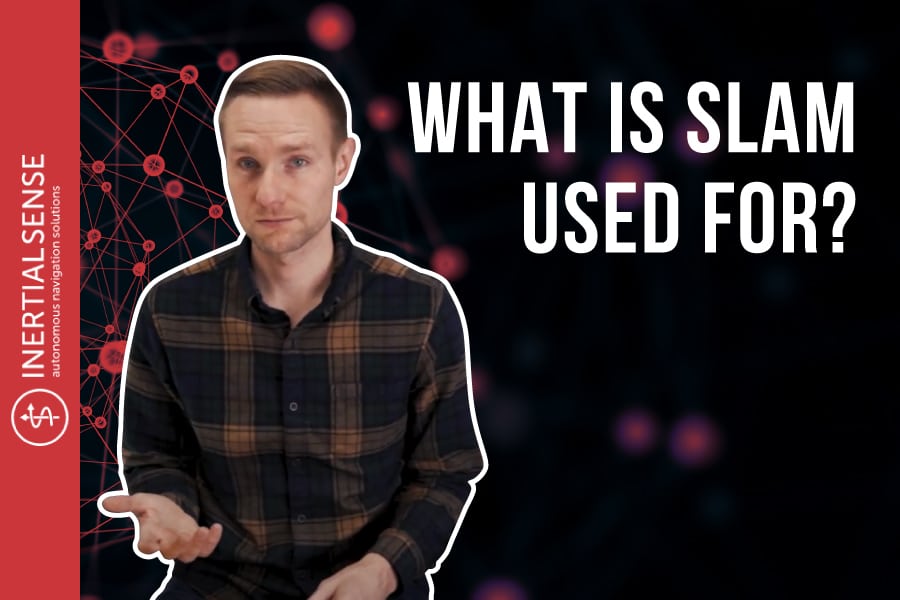
What is vSLAM Used For?
vSLAM, contrary to belief, does not stand for slamming down Virgin Mary’s. Well, what is it and what is it used for? Watch the video below as Chase explains what vSLAM is, and how it’s used with GPS to improve your robotic vehicle’s navigation.
vSLAM stands for visual simultaneous localization and mapping (that’s a mouthful). It is used in places where GPS reception may not be the best. The idea behind vSLAM is that you use cameras and other sensors, like an IMU, to build a map of the environment as you navigate through it.
The camera helps identify key points, and it matches where it thinks it has been. It attempts triangulation where it is in relation to the key points seen before.
vSLAM utilizes an algorithm to recognize it is in the same or a similar location and come back to the location. This is often referred to as loop closure.
Drift is a big issue when it comes to GPS navigation. If you travel over large distances, eventually a small error will accumulate over time. To reduce that error and that drift, vSLAM allows us to essentially reset when it recognizes something already seen.
An area with potential for vSLAM is mining due to GPS limitations.
vSLAM allows you to reconnect that global data in places where you don’t have it.
If you want to know more about visual-SLAM or anything else, please click the link and one of our experts will reach out!
Learn More:
The Difference Between GPS & GNSS
Visual SLAM and GPS Denied Landscapes
How Do Autonomous Robots Navigate?
Video Transcript
Timestamps
0:00 – Intro
1:24 – Advantages Of vSLAM
1:58 – Pairing With GPS With SLAM For Better Robotic Navigation
2:24 – Applications For SLAM In Robotic Navigation – Mining & Lawn Maintenance
What is vSLAM and what is it used for?
vSLAM stands for visual simultaneous localization and mapping. That’s a mouthful, and vSLAM is used in places where we don’t have good GPS reception. That could be in the middle of cities with tall buildings, or in a backyard covered in trees.
The idea behind vSLAM is that you can use a camera and other sensors like an IMU to build a map of your environment as you’re navigating through it. Based off that, be able to localize where you’re at in that environment.
vSLAM uses the camera to identify key points and as the vehicle travels around in the environment, it matches where it thinks it has gone based on things like how much the wheels have turned and how much inertia it’s felt in each direction. It matches to that where the key points are relative to where it’s seen them previously. So it tries to triangulate where it is in relation to the key points it’s seen before and figure out where we are based on that.
1:24 – Advantages of vSLAM
A lot of people want to know what the advantages are of the vSLAM. The big thing that comes from vSLAM is the ability to recognize where you have been after traveling for some time, and you come back to the location. That’s often referred to as loop closure.
The idea behind that is you start in one place and you can see some key features visually. You travel around and then by the time you get back to that spot where you noted that key feature, the algorithm is able to recognize that you’re in a same or similar location.
1:58 – Pairing With GPS With SLAM For Better Robotic Navigation
One of the biggest problems that GPS denied navigation has is drift over time. If you travel over large distances, eventually a small error will accumulate larger and larger. To reduce that error, to reduce that drift, vSLAM allows us to essentially reset when it recognizes something that we’ve already seen.
2:24 – Applications For SLAM In Robotic Navigation – Mining & Lawn Maintenance
What’s the need for vSLAM? In ground robotics, one big potential area is mining where you don’t have the advantage of GPS. or sometimes you have vehicles that are going in and out of mines. Sometimes they have a global system they can reference like GPS, sometimes they don’t.
vSLAM allows those vehicles to go underground or in a cave and localize within that region with the help of the global information they had before they went in the cave. So in a groundskeeping situation like say mowing a lawn, a lot of backyards have a lot of tree coverage, which is bad for GPS.
For some of the yards, you’re able to get accurate information based on GPS. Then you use that position to leverage that accuracy later when you’re driving, say under a tree or under a gazebo, or something like that. You’ll travel some time with less global certainty. vSLAM allows you to reconnect that global data in places where you don’t have it.
If you want to know more about visual-SLAM or anything else we’ve talked about, please just click the link below and we’ll get in touch with you!

